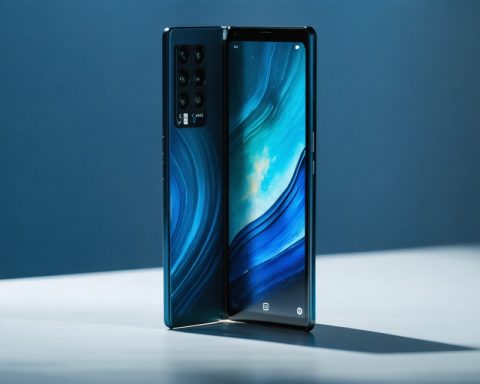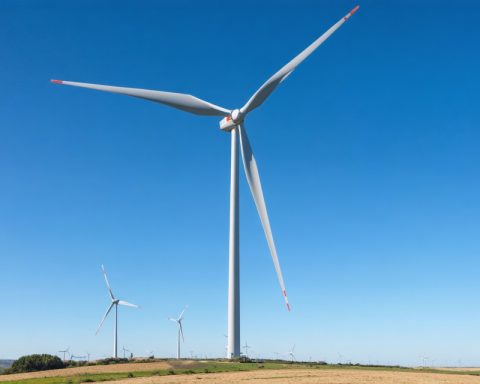- Washington State’s push for electric vehicles (EVs) is challenged by sluggish sales and unmet targets, raising concerns about the true beneficiaries.
- Washington’s EV sales fell short in 2024, with projections indicating only 59% EV adoption by 2030 without mandates, and just 68% even with them.
- Legislation tied to California dictates that no new gas-powered vehicles can be registered by 2030 and mandates 100% zero-emission vehicle (ZEV) production by 2035.
- Financial incentives, including a $46 million rebate, play a pivotal role, with 90% of recipients citing them as crucial in their purchase decision.
- Despite diverse incentives, Tesla dominates the market, capturing nearly half of new EV registrations, leading to criticism of subsidy and mandate beneficiaries.
- Washington faces a potential 25% compliance in the EV market by next year, trailing behind the 35% goal, risking price hikes and shortages.
- The key challenge is aligning mandates with market conditions to ensure the success of Washington’s green agenda without advantaging a single brand.
Washington State’s ambitious drive towards electric vehicles is hitting some unexpected roadblocks. Once hailed as the blueprint for green transportation, the state now finds itself grappling with sluggish sales, unmet targets, and a lingering question: Who truly benefits from this push?
Despite being second only to California in electric vehicle (EV) sales, Washington’s 2024 figures fell notably short of expectations. “The numbers tell a story of unmet aspirations,” the Electric Vehicle Coordinating Council acknowledges. Nationally, interest in EVs peaked in 2022 before waning, a trend mirrored in Washington’s own trajectory. This downturn is not for lack of consumer interest, but rather a market gap in offering affordable, enticing options, according to the report.
Washington’s commitment doesn’t merely stem from self-imposed goals. Legislative ties to California’s rigorous Air Control Board mandates mean that by 2030, no new gasoline-powered vehicles can be registered within the state. Further, auto manufacturers are bound to escalate their zero-emission vehicle (ZEV) production to 100% by 2035. Current reality paints a stark picture: if these standards vanished, projections suggest only 59% EV adoption by 2030. However, even with them, reaching the desired 68% remains a challenge.
Financial incentives sit at the heart of Washington’s strategy, but their effectiveness is under scrutiny. A notable sales tax exemption is poised to save buyers $52 million between 2023 and 2025, reportedly cutting around $1,000 from each purchase. Yet, the real motivator seems to be a $46 million rebate initiative launched in August, offering $2,500 to $9,000 per purchase depending on income levels. Astonishingly, 90% of recent rebate recipients stated these rebates were the clincher in their decision to go electric.
However, the undeniable truth is that nearly half of these sales benefited the same brand: Tesla. Elon Musk’s brainchild remains a dominant force, comprising 46% of all new EV registrations in 2025, only slightly down from 51% in 2024. This reality underscores one critic’s assertion that the true beneficiary of Washington’s subsidies and mandates isn’t necessarily the consumer or the environment, but rather Tesla.
Facing the stiff demands of a 35% EV or plug-in hybrid vehicle market by next year, Washington’s trajectory hints at potential price hikes and car shortages unless legislative amendments address the gap between aspiration and reality. The current growth rate heralds a likely 25% compliance, trailing 29% behind the goal.
The core takeaway is unmistakable: without adjusting the 2025 mandates or decoupling from California’s stringent standards, the state’s environmental aspirations may unwittingly fuel an economic boon for Tesla. As Washington navigates this green journey, the path forward is clear yet fraught: balance mandate ambition with market realities to truly drive an all-inclusive electric road ahead—or risk being a tale of unintended beneficiaries.
Unveiling the Hidden Challenges and Opportunities in Washington’s Electric Vehicle Push
Overview
Washington State’s ambitious move towards electric vehicles (EVs) has encountered unexpected challenges despite its strong legislative backdrop and consumer interest. With hurdles such as unmet sales targets, market gaps, and the unintended favoritism towards Tesla, the state stands at a crossroads in its green transportation journey.
Key Challenges and Market Trends
1. Consumer Sentiment and Market Gaps: Despite robust consumer interest, a lack of affordable and enticing EV options has been a significant bottleneck. While legislative actions aim to foster a transition, the array of choices doesn’t yet meet diverse consumer needs and preferences. Reports indicate that the market is overly skewed towards higher-priced models, limiting access for median-income households.
2. Legislative Pressures: Washington’s adherence to California’s Air Control Board standards adds pressure, mandating 100% zero-emission vehicle production by 2035. However, the realistic outlook suggests that even with strict enforcement, the state might achieve only 68% EV adoption by 2030, far below the 100% target.
3. Dominance of Tesla: Tesla’s overwhelming presence highlights another issue—the concentration of benefits. Tesla’s market dominance, fueled by their substantial share of state rebates, suggests that while consumer incentives are beneficial, they may inadvertently benefit established EV giants more than fostering broader competition.
Industry Insights and Predictions
– Potential for Legislated Adjustments: Without amendments to current mandates, Washington may face price hikes and potential shortages. Legislative adjustments could provide a more balanced approach, promoting an equitable EV market that caters to a wider demographic.
– Rise in Alternative EV Manufacturers: As the EV market matures, we can expect other manufacturers to challenge Tesla’s dominance. Emerging technologies, improvements in battery efficiency, and decreased costs will likely catalyze this shift. Brands like Ford, Rivian, and Nissan are innovating to capture market share with new models that offer competitive alternatives.
– Growth in EV Infrastructure: Expect a parallel investment surge in charging infrastructure. State and local governments will need to expand charging stations to support consumer uptake, particularly in underserved urban and rural areas.
Pros and Cons Overview
Pros:
– Significant rebates and tax incentives bolster affordability for consumers.
– Stringent standards push innovation in clean vehicle technology.
– Positive environmental impact aligns with global sustainability goals.
Cons:
– Market gap in affordable models limits access for some consumers.
– Dependence on a single manufacturer like Tesla can stifle competition and diversity.
– Legislative rigidity may lead to unforeseen economic impacts such as shortages and price increases.
Actionable Recommendations for Consumers
– Research and Compare Models: Utilize resources like Edmunds to compare EV models on price, efficiency, and incentives.
– Maximize Incentives: Check eligibility for state rebates and tax exemptions to reduce purchase costs.
– Explore Financing Options: Consider EV lease deals or financing options which could offer additional savings over time.
Conclusion
Washington’s path towards widespread EV adoption presents challenges but also immense opportunities. Achieving a balance between legislative ambition and market flexibility is crucial. By addressing gaps and promoting diversified manufacturer engagement, Washington can better position itself as a leader in sustainable transportation while ensuring consumer benefits are widespread and equitable.
For more information on electric vehicles and sustainability initiatives, visit the Department of Energy.


















